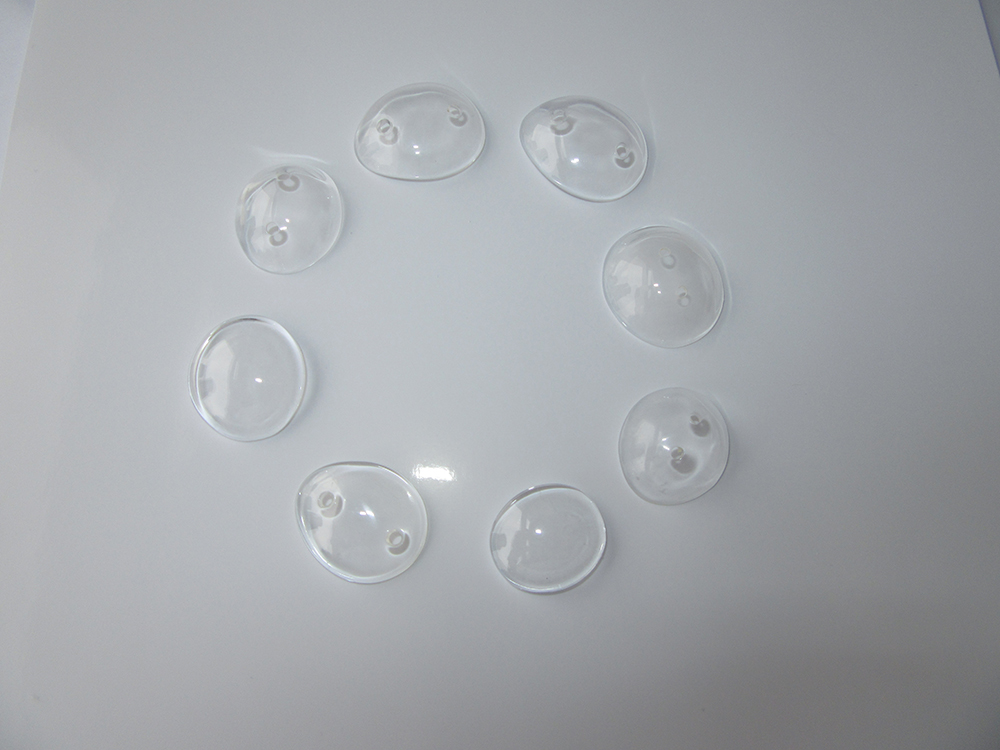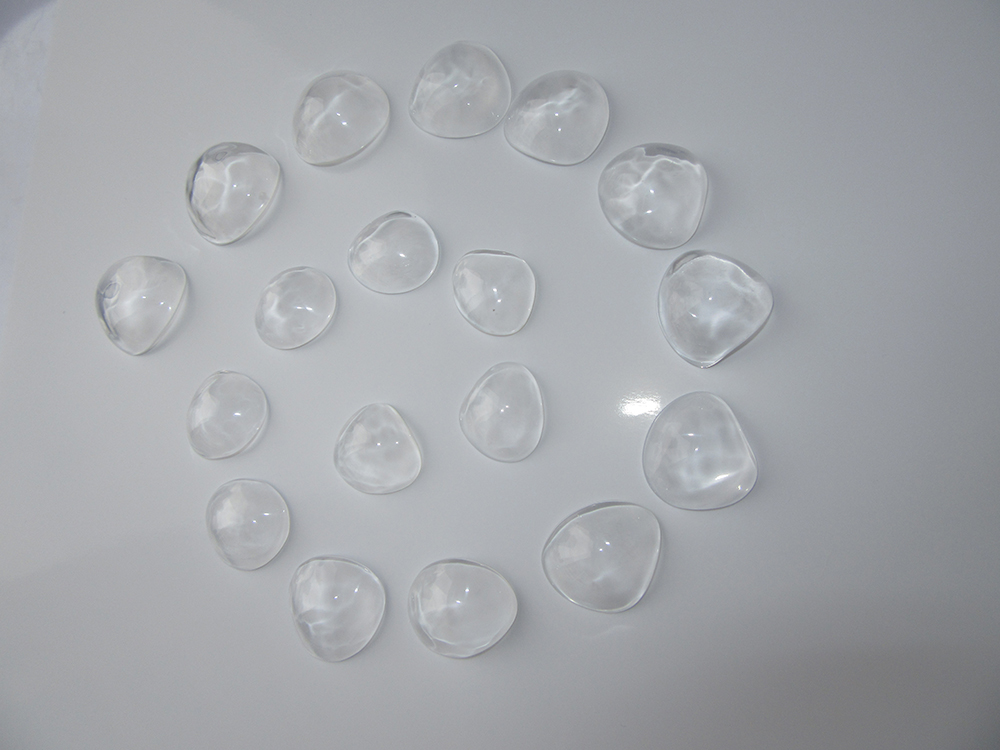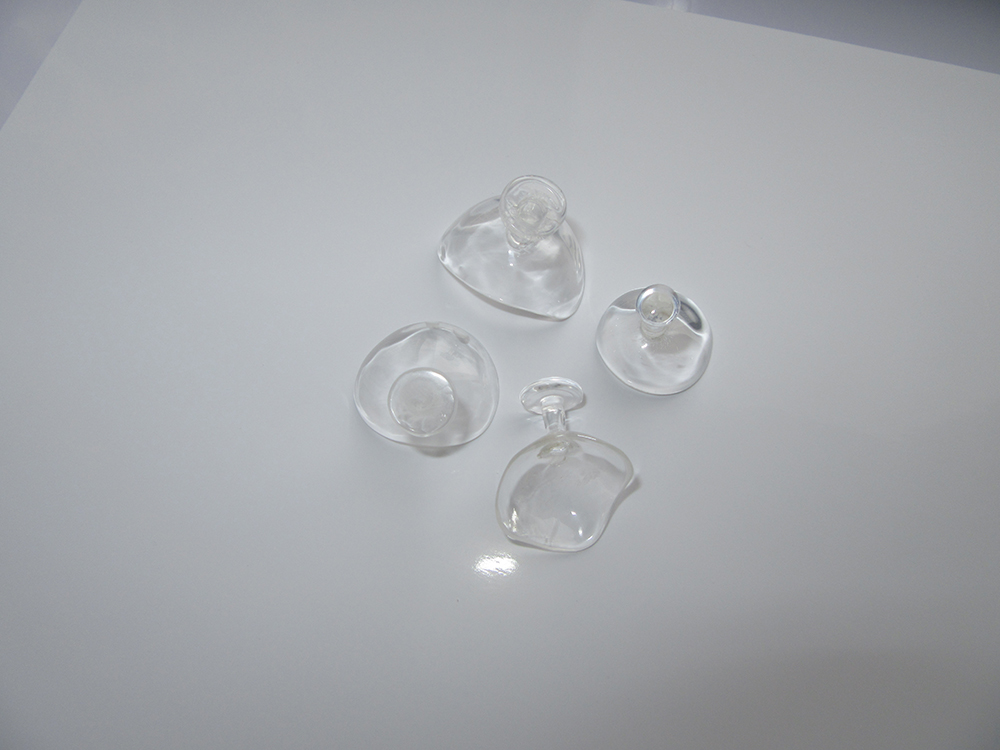After your surgical procedure, your surgeon may choose to fit you with a postoperative conformer. If not, we will place a custom conformer after examination of the socket during the consultation appointment at Erickson Laboratories. A generically shaped conformer is a slightly convex oval shape that is made of clear acrylic plastic. The conformer serves the very important function of maintaining the socket while healing takes place. It functions to maintain the integrity of the fornices of the socket while providing structure and volume for the lids to blink comfortably over. It also serves to provide protection of the socket and to prevent contraction. Some Conformers are smooth all over, while some have holes to allow for the passage of fluid such as drainage, medication, or to help alleviate pressure and swelling. It is recommended to wear the conformer at all times while the socket is healing. The conformer also helps to ready the socket and patient for the fabrication of the custom ocular prosthesis. At the post-operative consultation appointment, in addition to answering any questions, discussing the upcoming process of fabrication and examining the socket, we will check the fit of the post-operative conformer if one was placed by your surgeon after enucleation or evisceration. It is often necessary to interchange the postoperative conformer with a custom fit conformer due to swelling dissipating in the socket. The custom conformer should be worn at all times. So often, patients tell us their frightening stories about their experience of something falling out of their socket because they were unaware of the conformer being there. If your conformer should fall out, try not to panic. The conformer can be washed with a baby shampoo that is a gentle cleanser which is non-irritating to the socket and rinsed off with warm water and reinserted into the socket. If you need guidance, please call us and we are happy to help you.



Removal of a Conformer
If you wish to remove your conformer to rinse it off and put it back in, you may do so once your doctor has advised you of the proper time frame for this. Always take safety precautions when removing the conformer. Wash your hands with soap and water before you begin. Look around your surroundings and make sure that any sink drains are covered and toilet lids are closed before removing your conformer. For removal, use your pointer finger to swipe inside bottom lid and under eye, with the finger resting on the lid margin. Starting from your nasal corner and sweeping towards your ear. Be ready to catch the conformer so it does not fall to the ground. Keep in mind, if secretions have built up behind the conformer drainage will escape as the conformer is removed. The conformer can be washed with a baby shampoo that is a gentle cleanser which is non-irritating to the socket and rinsed off with warm water and reinserted into the socket. If you need guidance, please call us and we are happy to help you.
Placing a Conformer back into the socket
With clean hands and a rinsed off conformer, you are ready to place it back into the socket:
Step 1: Lift upper lid to create an opening, usually with your upper eyelashes under your finger that is doing the lifting. This helps to create a “nice pocket” for the conformer to move up and in to.
Step 2: With the narrow edge of the conformer pointing towards your nose, push the eye under your upper lid, and into socket.
Step 3: Release upper lid, while holding the conformer in place.
Step 4: With your other hand, carefully ease the bottom lid down a bit until the conformer drops into place.
Conformer Therapy for contracted sockets
On occasion, patients may be referred for pressure conformers for those who are more susceptible to socket contraction, which is a shrinking of the socket cul-de-sac due to injury or the bodies healing process. For these patients pressure conformers are vitally important to help maintain the fornices so that the socket and lids can retain the ocular prosthesis. Your physician may choose surgical intervention to help retention of the pressure conformer or an ocular prosthesis.
